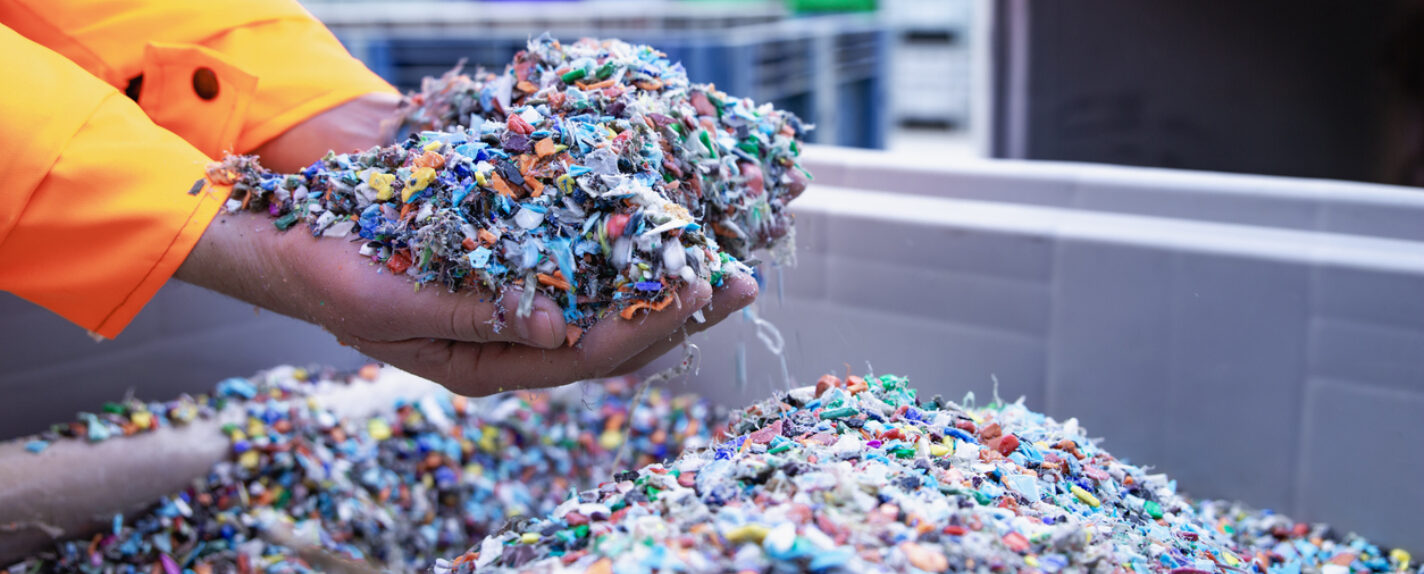California Proposes Regulating Microplastics in Consumer Products

Newsletter Articles
California’s Department of Toxic Substances Control (DTSC) has proposed to list microplastics as a “Candidate Chemical” under the state’s Safer Consumer Products (SCP) Program, a program aimed at regulating toxic chemicals in consumer products.[1] The proposal would allow DTSC to begin to regulate microplastics as a class across an array of product categories during a product’s life cycle. It follows a similar path to the one California used to restrict the use of emerging contaminants like PFAS in certain products sold or manufactured in the state.[2]
DTSC’s Priority Product Work Plan for 2024-2026 identifies “Products that Contain or Generate Microplastics” as a category of consumer products for evaluation.[3] This product category “encompasses any consumer product that may contain or generate microplastics during its product life cycle,” including plastic packaging, polyester apparel and other textiles, tires, and paints. The proposal reflects a wave of new chemical regulations and litigation in the United States, Canada,[4] and elsewhere targeting the use of plastics in products as diverse as packaging, cosmetics, textiles and apparel, and tires.
Microplastics and Possible Health Effects
The term “microplastics” is an umbrella term that encompasses a variety of chemical fragments or fibers. They are in many cases invisible to the naked eye but are ubiquitous in the environment. They are typically defined as pieces of plastic less than 5 millimeters in diameter,[5] and are ubiquitous in the environment.[6]
Microplastics may be intentionally produced and incorporated as an element of a product, such as plastic microbeads in cosmetics. They may also be formed through the deterioration of a plastic item, such as fibers shed from polyester clothing. Intentionally manufactured microplastics are sometimes referred to as “primary microplastics,” while microplastics arising from plastic degradation are classified as “secondary microplastics.”
Regulators have justified an increased focus on microplastics based on studies that have found that they can accumulate in the body, and lead to an increased likelihood of cardiovascular and neurological illness.[7] While there is no scientific consensus regarding the effects of microplastics on human health, some jurisdictions are starting to treat microplastics as a public health threat.
Microplastics Regulations
To date, microplastics regulation has primarily focused on cosmetics. The broadest restriction is the federal Microbead-Free Waters Act of 2015.[8] That law prohibits the manufacture, sale, and distribution of “rinse-off cosmetics” like soap, shampoo, and toothpaste that contain plastic microbeads less than five millimeters in size.[9] All prohibitions in the Act took effect by 2019, effectively removing plastic microbeads from rinse-off cosmetic products nationwide. Several states have adopted their own prohibitions on microbeads in rinse-off cosmetics, and those laws either align with or were preempted by the federal ban. State legislatures have also recently considered proposals to expand upon the federal prohibitions, such as California’s AB 823, which proposed a ban on plastic microbeads and glitter in leave-on personal care products, such as deodorant or makeup, as well as cleaning products.[10] That proposal was vetoed by Governor Newsom this month due to concerns that it may ban biodegradable or natural alternatives to certain plastics.[11]
Pursuant to a 2019 law, California has adopted a statewide microplastics strategy.[12] In 2018, legislators required the California State Water Resources Control Board to adopt a definition of microplastics in drinking water and develop standard testing methodology.[13] In 2020, the Board issued a definition of microplastics in drinking water as those particles of “solid polymeric materials to which chemical additives or other substances have been added” that “have at least three dimensions” between 1 nanometer and 5,000 micrometers.[14] However, the issuance of a definition and testing methodology has not yet led to any regulation of microplastics in drinking water. Nor has California generally restricted the production, use, or release of microplastics into the environment.
Despite the lack of regulation directly targeting most forms of microplastics, some states have enacted laws that may indirectly reduce microplastics production by encouraging plastic recycling and source reduction. Extended producer responsibility (EPR) regimes in several states, such as California, Colorado, Minnesota, Maine, and Oregon include recycling requirements for single-use plastics.[15] Each of these states plan to adopt fee schedules that encourage the use of materials that are less expensive to recycle, such as a transition from plastic to paper and cardboard. California goes a step further with mandatory source reduction of plastic packaging used over the next several years.[16] By increasing recycling rates, EPR laws reduce the amount of plastic disposed, thereby limiting the release of microplastics into the environment. Still, beyond plastic source reduction targets, EPR laws do not require consumer products manufacturers to comply with any binding standards targeting microplastics.
Microplastics Litigation
The plastics industry has been targeted with litigation from class action plaintiffs following the regulation of microplastics. Plaintiffs in those cases have alleged that product manufacturers engage in “greenwashing” as to the quality or composition of products that they describe as “safe,” “natural,” or “pure” despite allegedly containing microplastics. Plaintiffs have filed class action complaints against manufacturers of baby bottles,[17] bottled drinking water,[18] baby wipes,[19] and more under greenwashing theories. For example, in Miller v. Handi-Craft Company, the plaintiffs challenged a baby bottle company’s failure to disclose the presence of microplastics in its products as a material omission, bringing claims under state consumer protection laws, for breach of warranty, and for restitution.[20] Most of these suits have been dismissed, but as plaintiffs’ attorneys modify their microplastics pleading practices, there will likely be a continuing risk of class action litigation by consumers claiming economic loss from marketing misrepresentations.
California’s Proposal and Potential Impacts
California’s proposed action would make it the first state to take meaningful steps to address all microplastic pollution and not just the small subset of microbeads in rinse-off cosmetics. If adopted, DTSC’s proposal would list all forms of microplastics, from microbeads to polyester fibers, as a unified “Candidate Chemical” under California’s SCP Program. The proposal defines microplastics for purposes of the program as “plastics that are less than 5 millimeters (mm) in their longest dimension, inclusive of those materials that are intentionally manufactured at those dimensions or are generated by the fragmentation of larger plastics.”[21]
Unlike most SCP Program listings, DTSC’s microplastics proposal addresses an entire category of materials rather than an individual chemical. In a technical document supporting its unique approach for microplastics, DTSC stated that the common potential for hazardous “environmental persistence” warranted a holistic Candidate Chemical listing for all plastic fragments smaller than 5 millimeters.[22] This approach may conflict with the SCP Program’s definition of a “chemical” subject to regulation, which is defined as “[a]n organic or inorganic substance of a particular molecular identity” or a combination of such substances that meets certain criteria.[23]
Listing is only the first step in DTSC’s regulatory process under the SCP Program. Even if adopted, the listing will not create any new regulatory requirements or designate any regulated entities. DTSC will, however, be authorized to further study microplastics and identify any “Priority Products” that present risk of microplastics exposure and the potential to cause significant adverse impact. Any Priority Product listing related to microplastics would require DTSC to undertake further formal rulemaking, including a 45-day public comment period. If any product is listed as a Priority Product for microplastics exposure, manufacturers must submit a Priority Product Notification (PPN) to DTSC within 60 days of the listing. After filing PPNs, manufacturers must submit an alternatives analysis and comply with any DTSC regulatory responses, including product disclosure, use restriction, reformulation, and/or redesign requirements.
Based on the results of the alternatives analysis for a given priority product, DTSC can implement a range of regulatory responses, including: requiring additional product information for consumers; imposing use restrictions on chemicals and products; prohibiting the sale of a product or requiring engineering controls; requiring end-of-life management; or ordering funding for green chemistry research. In this way, Candidate Chemical listing may lead to outright bans on the use of a chemical in a product. Manufacturers of such products who do not comply with any DTSC regulations will face fines of up to $50,000 per violation per day.[24]
Conclusion
California’s proposed regulatory approach for microplastics is largely unprecedented and could create significant challenges for brands and manufacturers producing products that contain or generate microplastics. However, consumer products brands have several options to both prepare for and influence any forthcoming DTSC regulations related to microplastics, including:
- Proactively assessing microplastics exposures tied to product formulations or manufacturing processes;
- Engaging with upstream suppliers and downstream partners to identify opportunities to mitigate microplastics concerns;
- Submitting comments and technical data on any relevant Priority Product listings proposed by DTSC; and
- Preparing for consumer class action litigation relating to microplastics.
Please contact members of Marten’s Consumer Products Practice, including James Pollack and Zack Zahner if you have questions regarding current or proposed microplastics regulation affecting consumer products.
[1] California Department of Toxics Substances Control, “DTSC Proposes Adding Microplastics to its Candidate Chemicals List,” (June 20, 2025), https://dtsc.ca.gov/2025/06/20/dtsc-proposes-adding-microplastics-to-its-candidate-chemicals-list/.
[2] Cal. Code. Reg. § 69511(5).
[3] California Department of Toxics Substances Control, Three‐Year Priority Product Work Plan (2024‐2026), at 22 (October 31, 2024); https://dtsc.ca.gov/wp-content/uploads/sites/31/2024/10/2024-2026-Priority-Product-Work-Plan.pdf.
[4] Marten Law, “Canada Mandates Reporting on Plastic Products, Packaging,” (April 28, 2025), https://martenlaw.com/news/canada-mandates-reporting-on-plastic-products-packaging
[5] EPA, “Microplastics Research,” (last updated July 2, 2025), https://www.epa.gov/water-research/microplastics-research.
[6] Nihart et al., Bioaccumulation of microplastics in decedent human brains, nature medicine (February 3, 2025); https://hsc.unm.edu/news/2025/_media/41591_2024_article_3453.pdf.
[7] Katia Savchuk, “Microplastics and our health: What the science says,” Stanford medicine (January 29, 2025), https://med.stanford.edu/news/insights/2025/01/microplastics-in-body-polluted-tiny-plastic-fragments.html.
[8] 21 U.S.C. § 331(ddd).
[9] Id. § 331(ddd)(2)(A).
[10] CA AB 823 (2025).
[11] California Office of the Governor, Veto Message (Oct. 11, 2025), SFresno_Biz25101115040
[12] California Ocean Protection Council, Statewide Microplastics Strategy, (February 2022), https://www.opc.ca.gov/webmaster/ftp/pdf/agenda_items/20220223/Item_6_Exhibit_A_Statewide_Microplastics_Strategy.pdf
[13] Cal. Health and Saf. Code § 116376.
[14] State Water Resources Control Board, Resolution No. 2020-0021, Adoption of Definition of ‘Microplastics in Drinking Water,’” https://www.waterboards.ca.gov/board_decisions/adopted_orders/resolutions/2020/rs2020_0021.pdf.
[15] Marten Law LLP, “States Enact Packaging Producer Responsibility Laws,” (July 22, 2024) https://martenlaw.com/news/states-enact-packaging-producer-responsibility-laws.
[16] Cal. Pub. Res. Code § 42050(c).
[17] Miller et al. v. Handi-Craft Company Inc., No. 4:24-cv-03782 (N.D. Cal. 2024).
[18] Daly et al. v. The Wonderful Company LLC, No. 1:24-cv-01267 (N.D. Ill. 2024); Moore v. BlueTriton Brands, Inc., No. 1:24-cv-01640 (E.D.N.Y. 2024); Slowinski et al. v. BlueTriton Brands, Inc., No. 1:24-cv-00513 (N.D. Ill. 2024); Perry Bruno v. BlueTriton Brands, Inc., No. 2:24-cv-01563 (C.D. Cal. 2024); Michael Dotson et al. v. CG Roxane, LLC, No. 2:24-cv-02567 (C.D. Cal. removed 2024); Michael Dotson v. Danone Waters of America, LLC, No. 2:24-cv-02445 (C.D. Cal. 2024); Baker v. Nestle S.A., No. 2:18-cv-03097 (C.D. Cal. 2019).
[19] Devery Merlo v. Water Wipes (USA) Inc., No. 3:25-cv-04640 (N.D. Cal. 2025).
[20] Compl. ¶¶ 3, 49–136, Miller et al. v. Handi-Craft Company Inc., No. 4:24-cv-03782 (N.D. Cal. June 25, 2024).
[21] California Department of Toxics Substances Control, Technical Document for the Proposal
to Add Microplastics to the Candidate Chemicals List, at 2 (June 31, 2025); https://dtsc.ca.gov/wp-content/uploads/sites/31/2025/06/Technical-Document-for-the-Proposal-to-Add-Microplastics-to-the-Candidate-Chemicals-List.pdf.
[22] Id. at 3.
[23] Cal. Code. Reg. § 69501.1(a)(20)(A).
[24] Cal. Health and Saf. Code § 25253.7(b)(1).
Newsletter Articles
Authors
Related Services and Industries
Authors
Related Services and Industries
Stay Informed
Sign up for our law and policy newsletter to receive email alerts and in-depth articles on recent developments and cutting-edge debates within our core practice areas.

